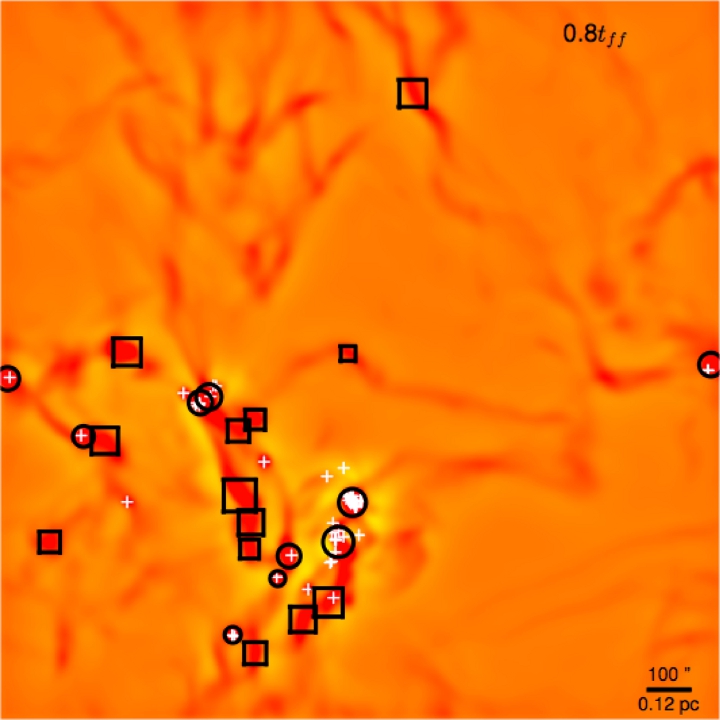| EPoS Contribution |
|
Synthetic Observations of the Evolution of Starless Cores in a Molecular Cloud Simulation: Comparisons with JCMT Data and Predictions for ALMA
Steve Mairs UVIC/NRC-HIA, Victoria, CA | |
| Interpreting the nature of starless cores has been a prominent goal in star formation for many years. In order to characterise the evolutionary stages of these objects, we perform synthetic observations of a numerical simulation of a turbulent molecular cloud. We find that nearly all cores that we detect are associated with filaments and eventually form protostars. We conclude that observed starless cores which appear Jeans unstable are only marginally larger than their respective Jeans masses (within a factor of 3). We note single dish observations such as those performed with the JCMT appear to miss significant core structure on small scales due to beam averaging. Finally, we predict that interferometric observations with ALMA Cycle 1 will resolve the important small scale structure, which has so far been missed by mm-wavelength observations. | |
 | |
| Caption: Observations of a simulated turbulent molecular cloud with densities and temperatures similar to the Perseus Star Forming Region. This snapshot shows the cloud at 80% of its global free-fall time. Circles represent unstable cores, squares show the locations of stable cores, and plus signs display the locations of protostar formation sites. | |
| Collaborators: D. Johnstone, HIA/JCMT, Canada/United States S.S.R. Offner, Yale, United States S. Schnee, NRAO, United States |
Key publication
Suggested Sessions: Cores |

